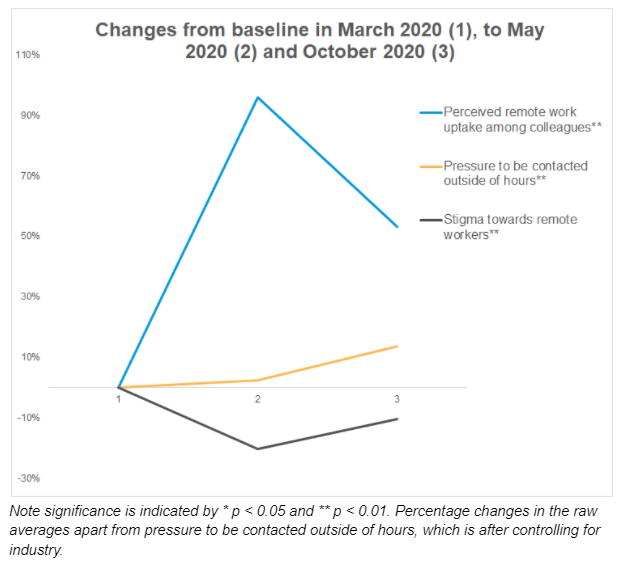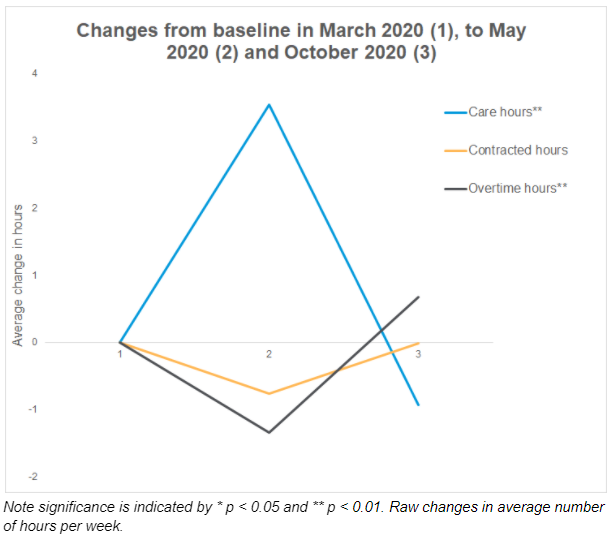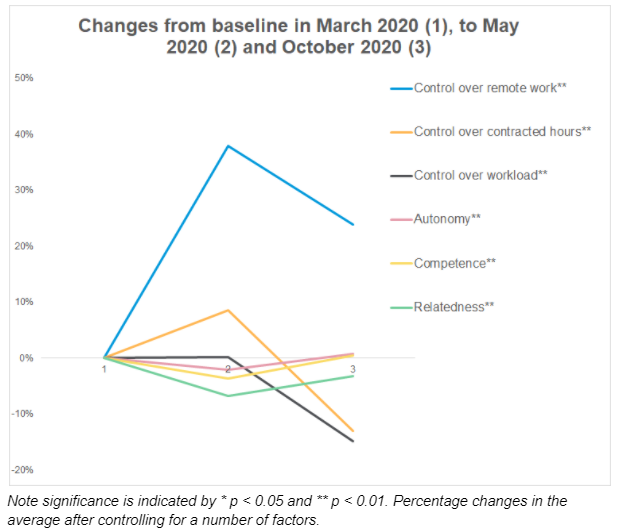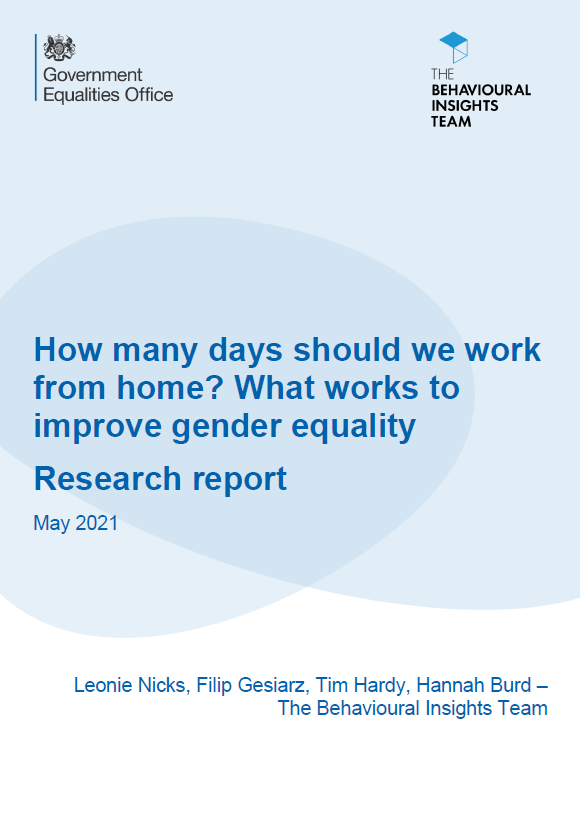The pandemic served as a ‘habit disrupter’ forcing many organisations to quickly find ways to allow employees to work remotely. We wanted to understand if these new flexible working habits are likely to stick and their impact on gender equality in the workplace.
Today we launch a report detailing the findings from a longitudinal survey carried out in 2020 with nearly 4,500 UK employees that collected data on the time periods before lockdown (March), during early lockdown (May) and during tiered lockdown (October). We explored changes in flexible working across time and their relationship with gender equality in the workplace.
Download the report
Remote working became much more normalised
While about two thirds of people did not work remotely at all before lockdown, the majority were working remotely to some extent by October 2020, and the perceived proportion of colleagues working remotely increased by 53%.
However, a significant proportion of the workforce does not have access to remote working, including 34% of our sample. Women who could work remotely did so slightly more than men in the same industry, but women were more likely to work in industries with lower access to remote work. This meant that, overall, men worked slightly more remotely than women, which was also the case before the pandemic.
Importantly, stigma towards remote workers, i.e. the perception that remote workers are less committed to their career, was 10% lower in October compared to pre-pandemic levels. Ensuring that senior leaders – who represent ‘success’ in an organisation – do not rush back to working primarily in the office will be key for sustaining the positive reduction in stigma.

Men and women have a similar appetite for remote working and it supported care work to a similar extent for men and women
Employees largely welcomed the increase in remote working, as perceived control over remote work increased by 32% despite its external enforcement. The vast majority (84%) of employees with access to remote working would like to continue to work remotely to some extent after the pandemic with no gender difference in appetite. How much employees want to work remotely varies greatly, which we explored in a previous blog ‘How many days should we work from home after COVID-19?’
Remote working may play a more positive interim role than part-time work in gender equality by facilitating increased care similarly for men and women. Men and women increased the time they spent on care to a similar extent with increased remote working during the pandemic, but among men and women whose hours decreased, women increased their care significantly more than men. This is likely because remote working does not yet have the same femininity stigma that part-time working does, suggesting that men may be more likely to work remotely and take on caring responsibilities than work part-time in the more immediate-term.
Download the report
While location-based flexibility improved, time-based flexibility worsened, potentially regressing gender equality
Contracted hours dipped in early lockdown, but by October they had recovered. However, by October, overtime working had increased 32% compared to pre-lockdown levels. Furthermore, by October, perceived control over contracted hours decreased by 9%, control over workload decreased by 2% and feeling pressured to respond quickly outside of hours increased by 14%. This suggests that working hours became more unpredictable as employees worked longer hours and felt less control over how much they worked.
A one-hour (around 28%) gender gap in overtime working emerged in early lockdown and was sustained into October with men working more overtime. This is concerning for workplace gender equality, as long working hours are disproportionately rewarded in the labour market. Working mothers carried out ten additional care hours per week than working fathers in October, so their capacity for overtime is limited. Organisations must be vigilant to remote working becoming a tool for overwork in order to avoid longer term negative impacts on gender equality.

To optimise the benefits of remote working, organisations need to improve social connection without losing increased employee autonomy
Workers experienced a small (but significant) 1% increase in autonomy and 4% increase in competence (feeling valued) by October from before lockdown in March. These are both important factors for employee motivation and wellbeing. At the same time, relatedness (interacting with colleagues and having a sense of belonging) decreased by 5%. Improving social connection without losing the benefits of increased independence represents an important challenge for organisations in embedding remote working into work culture sustainably.

Remote working could stand to benefit gender equality as it facilitates caring responsibilities in a less strongly gendered way than part-time work. However, it could worsen gender equality in the longer term if it reinforces long hours working culture.
Organisations can maximise the positive benefits of remote working in three ways:
- Proactively prevent increases in overtime
- Experiment with ways to support social connection without reducing employee autonomy
- Monitor employee data on remote working uptake across key groups, for example, among senior leadership vs. other grades since stigma towards flexible workers is partly driven by senior leadership behaviour
The COVID-19 pandemic demonstrated that previously immovable barriers can crumble overnight. This has provided us with an opportunity to reshape the way we work. Let’s think bigger than remote working and design broader forms of flexibility into our new habits, norms and ways of working.
Download the report
This work is part of the Gender & Behavioural Insights Programme, which was funded by the Government Equalities Office.




